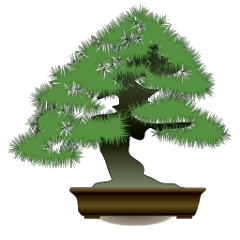As with any other plant, even for Bonsai, particular attention must be paid to:
- Light and Temperature
- Water
- Substrate
- Fertilizers
If one or more of these essential components fail or are insufficient, the Bonsai will begin to “struggle” and therefore to decline, in some cases until death.
Important: Since each species has its own particular needs for exposure, water, soil and fertilizers, the following are only general indications.
Light and Temperature
Without adequate exposure to light, chlorophyll photosynthesis cannot occur; with inadequate exposure, the plant will deteriorate rapidly and if it is not treated in time, it will undergo death. The bonsai will try to compensate for the lack of light by gradually enlarging and lightening the leaves.
Exposure that is too sunny with high temperatures, on the other hand, can lead to the withering of flowers and burns on the leaves. With exposure to temperatures that are too low, we can see the deformation of the leaves, cracks in the cortex and in extreme cases the freezing of the roots.
Water
Proper water administration is essential: little water or too much water is equally harmful to the survival of the Bonsai. If the amount of water is not sufficient, the withering, yellowing and falling of the leaves occurs. With too much water or poorly draining soil, instead, there is a risk that the roots will rot due to lack of ventilation. As a general rule, do Bonsai irrigations only when the soil is completely dry.
Substrate
Each species has its own preferences regarding the type of soil, but it is good practice to use components that guarantee good drainage and have a grainy composition, to stimulate the production of rootlets (akadama, pumice, pozzolan, kanuma for example).
Fertilizers
The correct intake of micro and macro nutrients is very important for the survival of Bonsai, above all because of the little ground in which they live. Also for fertilizers the right quantity and the type vary from species to species.
In general, remember to never place the Bonsai in the dark (if it is placed inside, not more than one meter from the window); instead, bright, fresh and well-ventilated areas should be preferred. In summer (and even in winter, for Bonsai kept in the apartment) it is often necessary to spray the hair to maintain a good level of humidity, always protecting the Bonsai from extreme temperatures (too hot or too cold).
Make regular watering, without ever leaving water in the saucer. In winter watering must take place in moderation, only during the hottest hours of the day.
It is good to fertilize constantly during the growing season (March-June / September-October).


